The “Integral Sign” galaxy, UGC 3697 is an edge-on spiral galaxy with an unusually pronounced warp in both its stellar and gaseous disks. The neutral Hydrogen gas, represented in blue, is overlaid on an optical image of the stars of the galaxy. Unlike in normal spiral galaxies, the brightest concentration of neutral Hydrogen is not found near the center of UGC 3697 but along its western edge, where the Very Large Array (VLA) has detected a bright, extended region of emission. In addition, plumes of gas extend to considerable height above and below the disk of the galaxy.
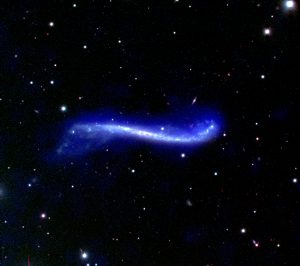
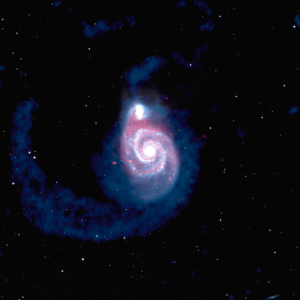
Multiwavelength Whirpool
In this composite image of the Whirlpool Galaxy, the Very Large Array has captured the vastness of this colliding pair like no other telescope can. In white is how the galaxies appear to optical telescopes: one giant spiral galaxy with a smaller one hanging off an arm. The VLA sees a much bigger picture. Colored blue are the cast-off gases that were once the outer spiral arms of these galaxies. In red are the areas where new stars are being born.
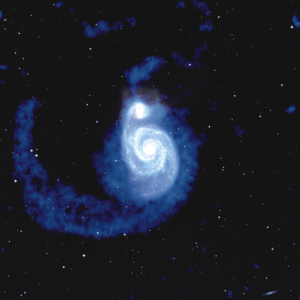
The Collision of M51
In this composite image of the Whirlpool Galaxy, the Very Large Array has captured the vastness of this colliding pair like no other telescope can. In white is how the galaxies appear to optical telescopes: one giant spiral galaxy with a smaller one hanging off an arm. The VLA sees a much bigger picture. Colored blue are the cast-off gases that were once the outer spiral arms of these galaxies. They’ve been yanked apart and left when the smaller galaxy passed by.
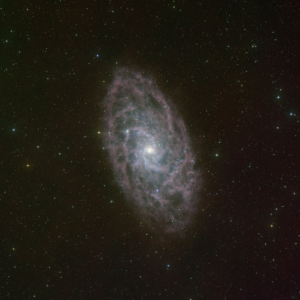
Radio Telescope Reveal the Cold Hydrogen Gas in M33
In this combined optical and radio image, the faint galaxy in the constellation Triangulum looks like lace hanging in the sky. Also known as M33, the Triangulum Galaxy is part of the Local Group of galaxies, which includes the Andromeda Galaxy and our galaxy, the Milky Way. M33 is over thirty thousand light years across, and more than two million light years away. The optical data in this image (white) show the many stars within the galaxy as well as reddish star forming regions that are filled with hot Hydrogen gas. The radio data (colored pink) from the Very Large Array (VLA) reveal the cool Hydrogen gas within the galaxy, gas which cannot be seen with an optical telescope. Combined together, the radio and optical give a more comprehensive view of star formation in this galaxy.
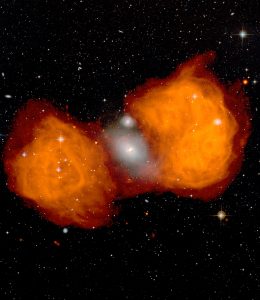
Famous Fornax Galaxy
Fornax A is a galaxy with a very active black hole in its core that is spraying radio waves out into enormous jets. Here, the white glow in the center is the visible galaxy NGC 1316 that you can see through the constellation of Fornax. Notice the wee spiral galaxy above it? These two galaxies are merging, and as gas and dust are stripped out of the small galaxy and poured into the center of NGC 1316, the black hole nestled there spins it up. How do we know this? The huge radio lobes to either side of this merger are the telltale signs that a black hole is being fed more than it can handle. These are the billowing ends of powerful jets shooting out spun-up, escaped material far into space.
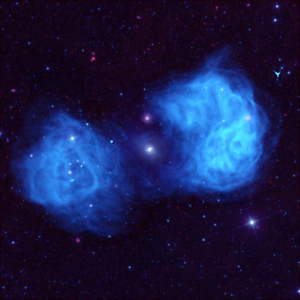
Fornax in Blue
Radio waves are invisible to our eyes, therefore, they do not arrive in any “color” that we’ve ever known. When we take our data and plot it, our artists can assign any color they please to the results. In this image of the famous Fornax radio galaxy, our artist tried a blue coloring for the enormous lobes of gas this galaxy’s black hole sprays out.

